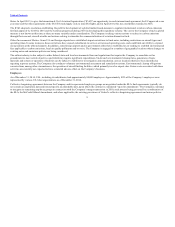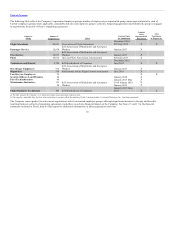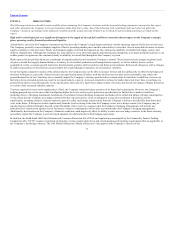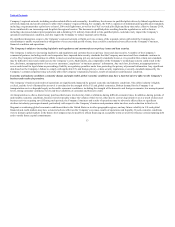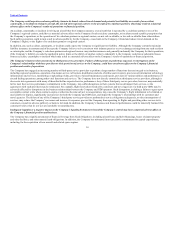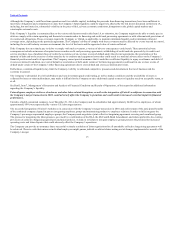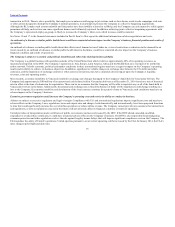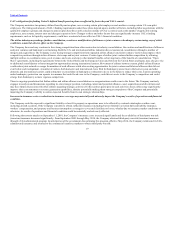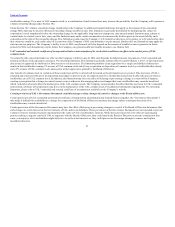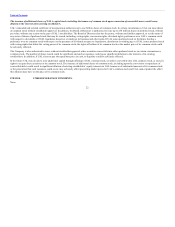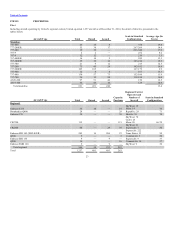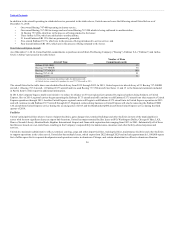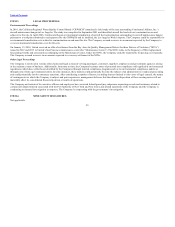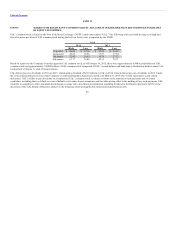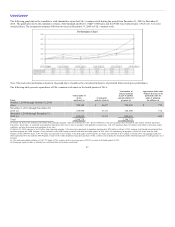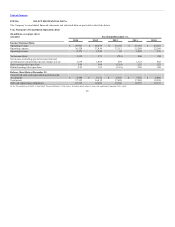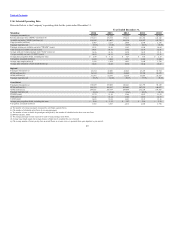United Airlines 2014 Annual Report Download - page 19
Download and view the complete annual report
Please find page 19 of the 2014 United Airlines annual report below. You can navigate through the pages in the report by either clicking on the pages listed below, or by using the keyword search tool below to find specific information within the annual report.
Table of Contents
UAL’s obligations for funding United’s defined benefit pension plans are affected by factors beyond UAL’s control.
The Company maintains two primary defined benefit pension plans, one covering certain pilot employees and another covering certain U.S. non-pilot
employees. The timing and amount of UAL’s funding requirements under these plans depend upon a number of factors, including labor negotiations with the
applicable employee groups and changes to pension plan benefits as well as factors outside of UAL’s control, such as the number of applicable retiring
employees, asset returns, interest rates and changes in pension laws. Changes to these and other factors that can significantly increase UAL’s funding
requirements, such as its liquidity requirements, could have a material adverse effect on UAL’s financial condition.
The airline industry may undergo further consolidation, creation or modification of alliances or joint ventures or bankruptcy restructuring, any of which
could have a material adverse effect on the Company.
The Company faces and may continue to face strong competition from other carriers due to industry consolidation, the creation and modification of alliances
and joint ventures and bankruptcy restructuring. Both the U.S. and international airline industries have experienced consolidation through a number of
mergers and acquisitions. The Company is also facing stronger competition from expanded airline alliances and joint ventures. Carriers may improve their
competitive positions through airline alliances, slot swaps and/or joint ventures. Certain types of airline joint ventures further competition by allowing
multiple airlines to coordinate routes, pool revenues and costs, and enjoy other mutual benefits, achieving many of the benefits of consolidation. “Open
Skies” agreements, including the agreements between the United States and the European Union and between the United States and Japan, may also give rise
to additional consolidation or better integration opportunities among international carriers. Movement of airlines between current global airline alliances
could reduce joint network coverage for members of such alliances while also creating opportunities for joint ventures and bilateral alliances that did not
exist before such realignment. A number of carriers, both domestic and international, have filed for bankruptcy protection in the last ten years and other
domestic and international carriers could restructure or consolidate in bankruptcy or threaten to do so in the future to reduce their costs. Carriers operating
under bankruptcy protection can operate in a manner that could be adverse to the Company, could divest assets to the Company’s competitors and could
emerge from bankruptcy as more vigorous competitors.
There is ongoing speculation that further airline and airline alliance consolidations or reorganizations could occur in the future. The Company routinely
engages in analysis and discussions regarding its own strategic position, including current and potential alliances, asset acquisitions and divestitures and
may have future discussions with other airlines regarding strategic activities. If other airlines participate in such activities, those airlines may significantly
improve their cost structures or revenue generation capabilities, thereby potentially making them stronger competitors of the Company and potentially
impairing the Company’s ability to realize expected benefits from its own strategic relationships.
Increases in insurance costs or reductions in insurance coverage may materially and adversely impact the Company’s results of operations and financial
condition.
The Company could be exposed to significant liability or loss if its property or operations were to be affected by a natural catastrophe or other event,
including aircraft accidents. If the Company is unable to obtain sufficient insurance (including but not limited to aviation hull and liability insurance,
workers’ compensation, and property and business interruption coverage) to cover such liabilities or losses, whether due to insurance market conditions or
otherwise, its results of operations and financial condition could be materially and adversely affected.
Following the terrorist attacks on September 11, 2001, the Company’s insurance costs increased significantly and the availability of third-party war risk
(terrorism) insurance decreased significantly. From September 2001 through May 2014, the Company obtained third-party war risk (terrorism) insurance
through a FAA-administered program. In anticipation of the government discontinuing this program, effective May 2014, the Company terminated its FAA-
administered insurance and returned to the commercial insurance markets to obtain third-party war risk
19


